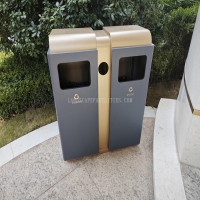Welcome to the website for landscape facilities products and knowledge.
How do manufacturers address the issue of lid durability in high-use scenarios?
In high-use scenarios, lid durability is a critical concern for manufacturers across industries, from food packaging to electronics. To address this challenge, companies employ a combination of advanced materials, innovative designs, and rigorous testing protocols.
1. Material Selection: Manufacturers opt for high-grade plastics, reinforced polymers, or metals like stainless steel to withstand repeated opening and closing. Materials with high fatigue resistance, such as polypropylene or ABS, are often preferred for their longevity.
2. Reinforced Hinge Systems: Hinges are common failure points, so engineers focus on robust designs like over-molded hinges, metal inserts, or living hinges with optimized flex points. Some lids incorporate dual-spring mechanisms to reduce stress.
3. Structural Enhancements: Ribbing, thickened edges, or corrugated designs add strength without excessive weight. For example, snap-fit lids may include reinforced locking tabs to prevent deformation.
4. Testing and Simulation: Accelerated life testing (e.g., 10,000+ open/close cycles) and finite element analysis (FEA) help predict wear patterns. Environmental stress tests evaluate performance under extreme temperatures or humidity.
5. User-Centric Design: Ergonomic features like finger grips or balanced weight distribution minimize excessive force during use, indirectly prolonging lid life.
By integrating these strategies, manufacturers ensure lids meet the demands of daily industrial, commercial, or consumer use while maintaining functionality and safety. Continuous innovation in material science and design further pushes the boundaries of durability.
Related search:

Recommendation
Double-bucket garbage bin, outdoor, metal, multi-color, powder-coated, double-bucket trash can